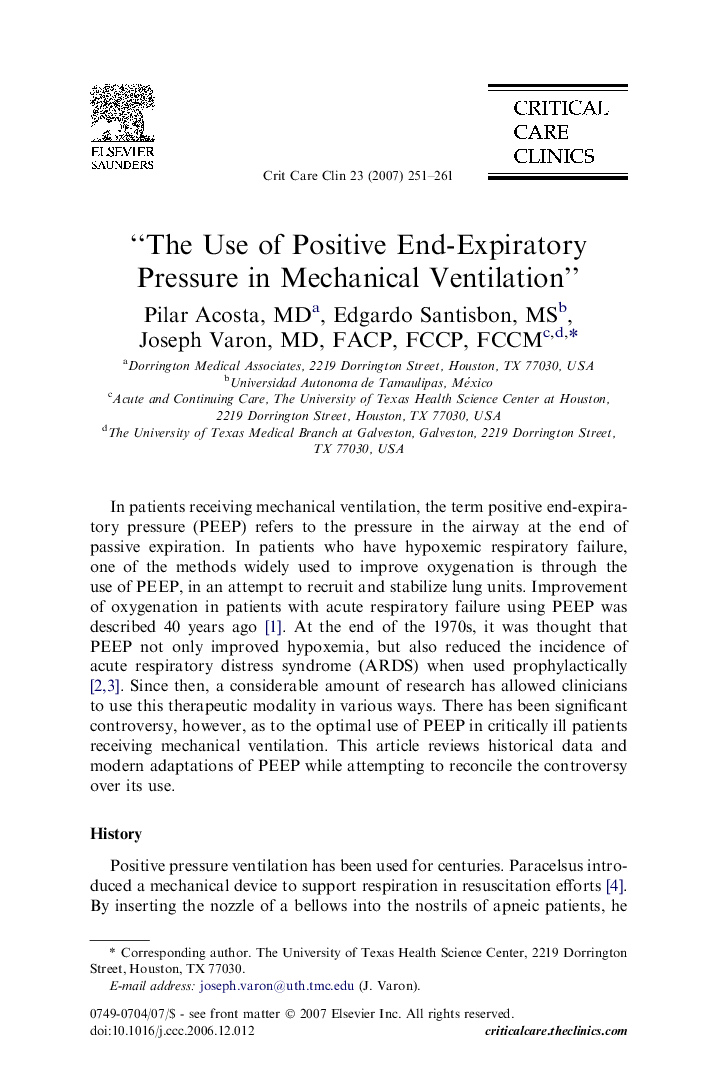| Article ID | Journal | Published Year | Pages | File Type |
|---|---|---|---|---|
| 3108486 | Critical Care Clinics | 2007 | 11 Pages |
An improvement in oxygenation for patients who have acute respiratory failure using PEEP was described close to 40 years ago. Since then, a considerable amount of research has allowed clinicians to use this therapeutic modality in various ways. In patients receiving mechanical ventilation, the term positive end-expiratory pressure (PEEP) refers to pressure in the airway at the end of passive expiration that exceeds atmospheric pressure. The use of PEEP mainly has been reserved to recruit or stabilize lung units and improve oxygenation in patients who have hypoxemic respiratory failure. It has been shown that this helps the respiratory muscles to decrease the work of breathing and the amount of infiltrated-atelectatic tissues. The beneficial effects of the use of PEEP include: the improvement of oxygenation, recruitment of lung units, and improvement of compliance. Other effects can be adverse, like decreasing cardiac output, increased risk of barotrauma, and the interference with assessment of hemodynamic pressures.
